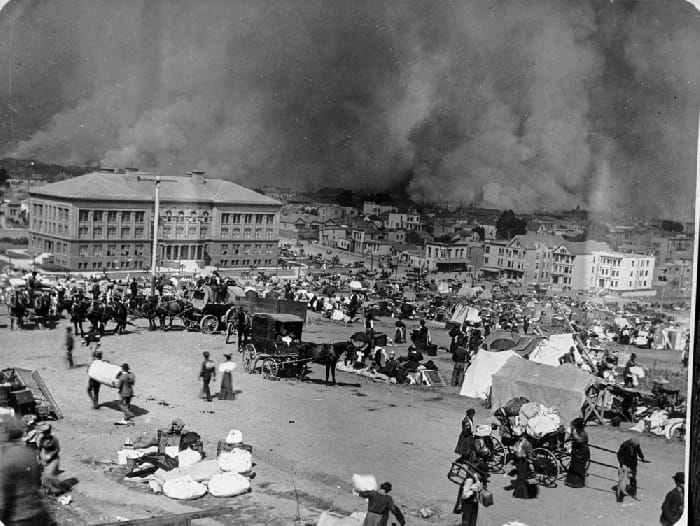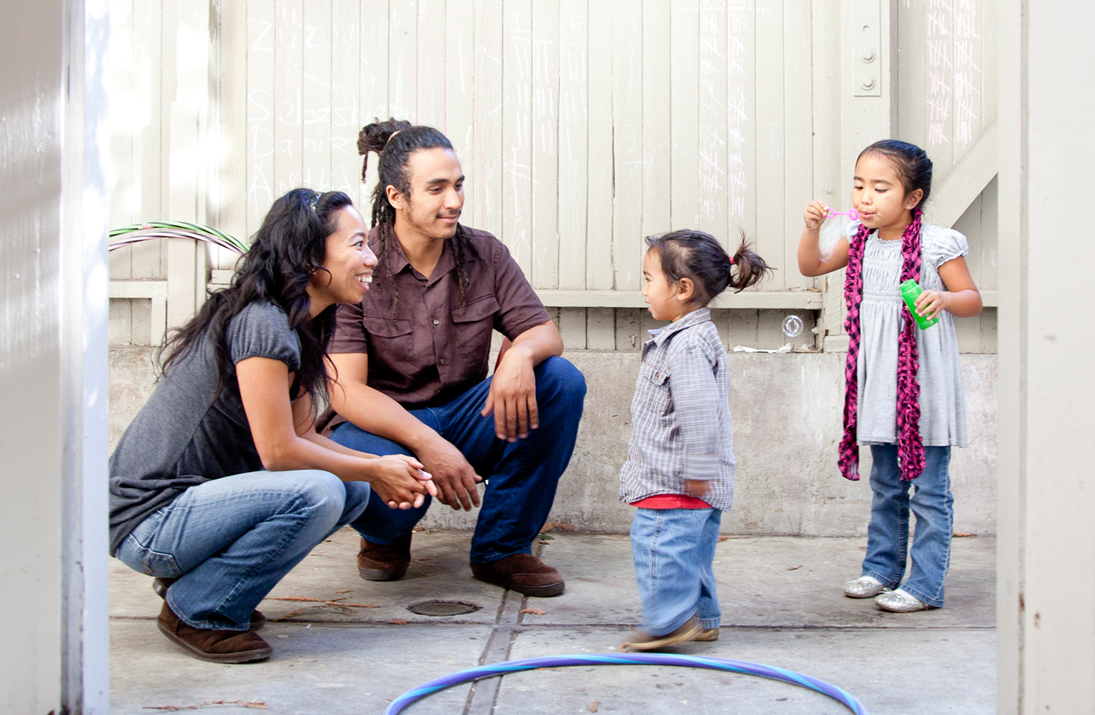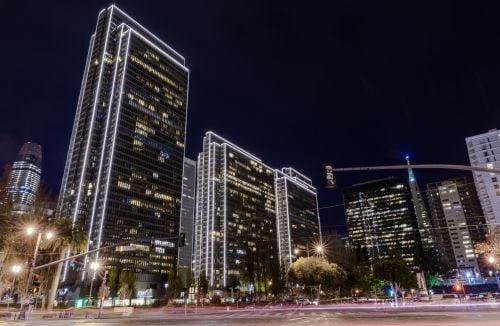
Refugees rest in Dolores Park following the 1906 earthquake. At the time this photo was taken, fire had all but consumed downtown San Francisco.
June was off to a bumpy start in the Bay Area. Three separate tremors happened in the early morning hours of Sunday, June 3rd. The first at 1:40 AM rattled the leeward side of the Berkeley Hills two miles north of Orinda. It was a M2.2, barely perceptible but to those right on top of it. Two hours later at 3:35 AM, a M3.4 jolted some awake near Alum Rock fifty miles away. It would be the strongest quake that morning but not the last. The most recent occurred around sunrise, again on the Other Side of the Hills. At 6:05 AM, a tremor just east of Antioch rang in at M2.5.
A handful of San Francisco residents reported feeling the distant M3.4 using the USGS’ Did You Feel It? feature. I got home from closing my bar at about 3:05, got stoned and watched stand-up comedy. The tremor didn’t register to me whatsoever. Whether it was the pot or the divine joy of watching somebody do something well, I didn’t feel any shaking. I’m always disappointed when I fail to notice earthquakes. Not that I yearn for the Big One. I enjoy those little jolts, M4.5 or less, the way I do an amusement park ride.
I wondered like I do after every quake I miss, how long before I feel the Earth move? This time it also got me thinking: why don’t we get more earthquakes?
A stark difference in time
Californians of the nineteenth century were far more earthquake-hardy, compared to us at least. Beginning in 1836 with a quake at present-day Monterey, Northern California saw a precipitous rise in seismic activity. An earthquake in 1840 reportedly felled a steeple in Santa Cruz. Another in 1851 was so severe, it shattered windows in San Francisco. In 1857, the city rocked for four minutes because of a magnitude 8 near the distant pueblo of Los Angeles.
Year after year of worsening quakes didn’t go unnoticed. San Francisco’s oldest paper the Alta California published this remark in 1864: “Earthquakes are becoming a permanent institution in California. Scarcely a week passes without one or more being felt; this season they seem to be more numerous and severe than usual.” The city suffered its worst one yet the following year in 1865. Walls swayed “like willow branches in the wind.” Scary though they were, earthquakes weren’t deadly yet.
More tremors, some damaging, rattled the city through 1866. A general rule in seismology says that aftershocks diminish at a rate of one over ten every twenty-four hours. Once they taper off, normal background activity resumes. That wasn’t happening in San Francisco. In fact they were happening more often, and getting stronger.
One Text a Week: All the Best Bay Area Events * indicates required Email Address * SMS Phone Number Broke-Ass Stuart - By providing your phone number, you agree to receive promotional and marketing messages, notifications, and customer service communications from Broke-Ass Stuart. Message and data rates may apply. Consent is not a condition of purchase. Message frequency varies. Text HELP for help. Text STOP to cancel.See terms.
Seeking answers, officials accepted advice from scientists like Dr. John Veatch, who persuaded many that the seawater surrounding the city would dampen the greatest shocks. Seismologists today would tell you something else was at work here. 1865 was called the Great San Francisco earthquake, but it wouldn’t hold rank very long. It was only a matter of time before a larger, more costly one usurped it.
The morning of October 21st, 1868, an earthquake at least twice the strength of its predecessor tore through the city. Most structures on solid ground fared well, with devastation widespread on boldly named “reclaimed land,” once part of the Bay. That means North Beach, South of Market, the Financial District, and what would become the Marina. Fissures criss-crossed the streets of downtown. Humps and bowls in the ground South of Market were measured in feet.
Thirty people lost their lives, proving quakes in California can kill. This event took the crown as the Great San Francisco earthquake. Though many tremors would try and take the title, its reign would last for thirty-eight years.
The earthquake that changed it all
What I wish to emphasize about the M7.9 1906 earthquake is its near-incomprehensible power. The sheer force of it weaponized one’s inertia, hurling sleeping bodies from their beds as if their houses were going over. Entire buildings crumbled before anyone could escape. A tremendous roar became louder and louder until the sound and the shaking were one and the same. It went on like this for sixty long agonizing seconds.
The shockwaves raced along the San Andreas, north toward Cape Mendocino as well as south to San Juan Bautista. The legendary fault unzipped for a total of three hundred miles. The dead numbered over three thousand in San Francisco alone. Many blame the firestorm that followed more than the earthquake itself for the high death toll.
An age of relative seismic calm has indulged the Bay Area since then. The San Andreas Fault was thought to have blown through its entire seismic budget. Sixteen earthquakes over magnitude 6 struck Northern California between 1838 and 1906. Between 1906 and 2014, there would only be five. Three of the Bay Area’s seven major faults are at least twenty percent likely to fail in our lifetimes. Odds that it’ll be the Hayward Fault are high at one in three.
For now, all is quiet on the western front. Scientists call this a stress shadow.
The post Why Aren’t Earthquakes More Common? appeared first on Broke-Ass Stuart's Website.







